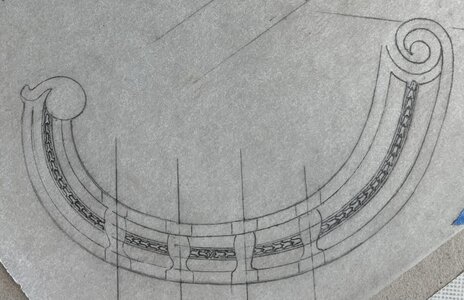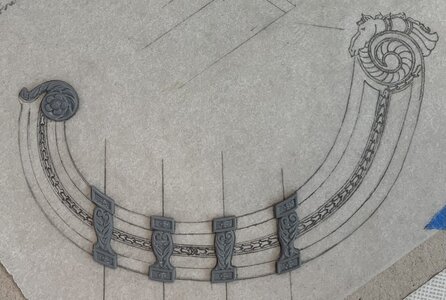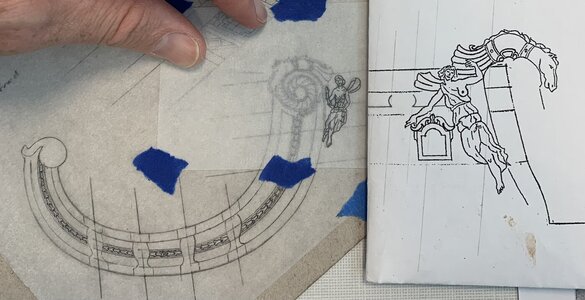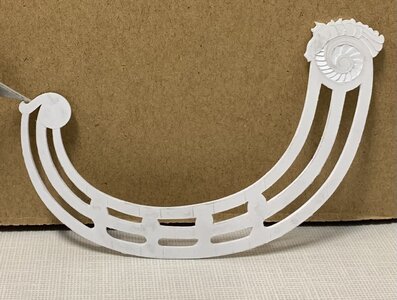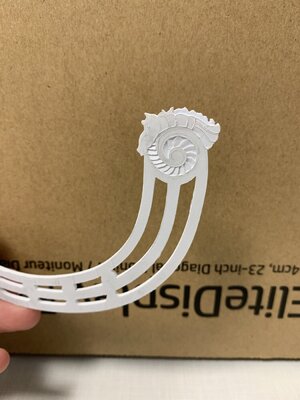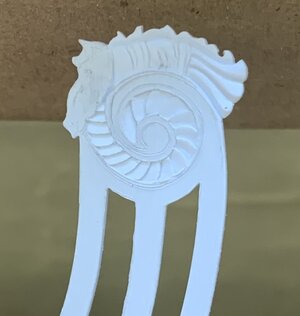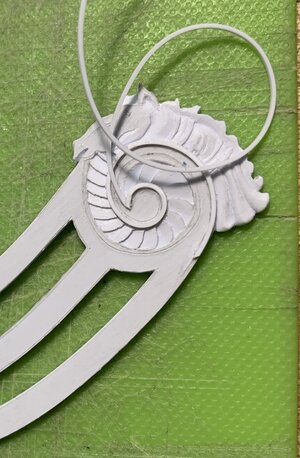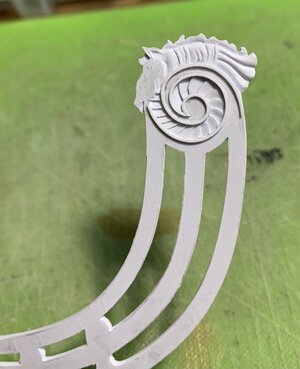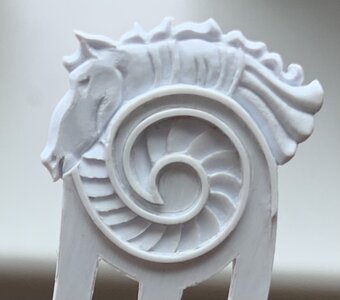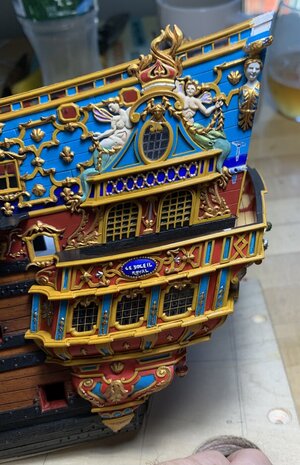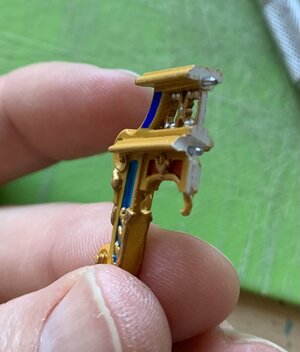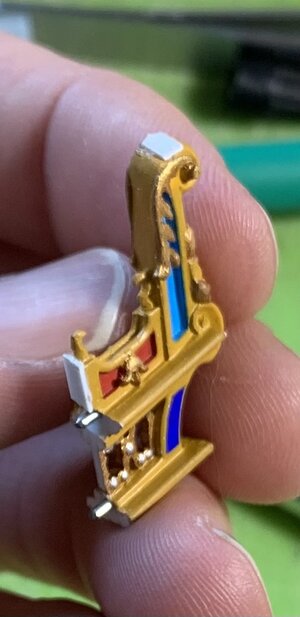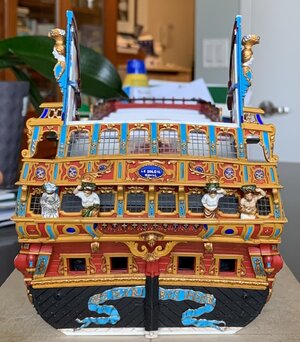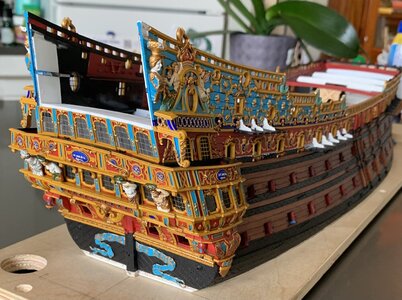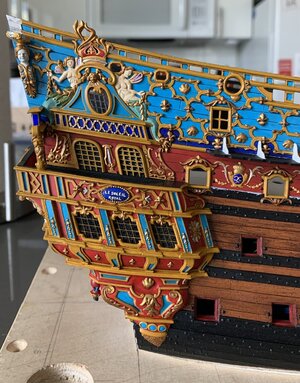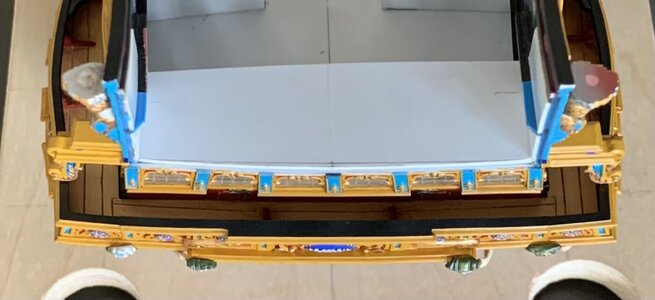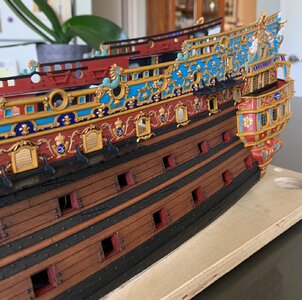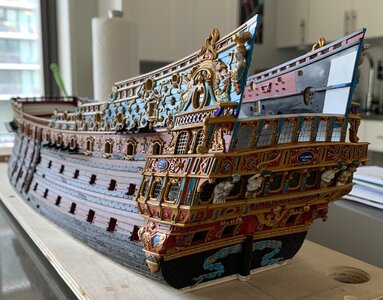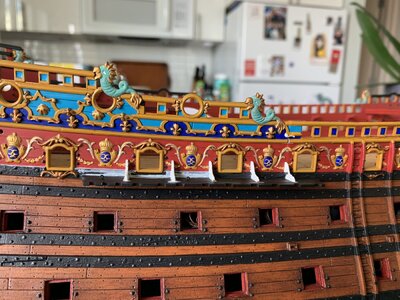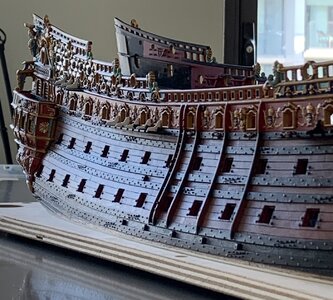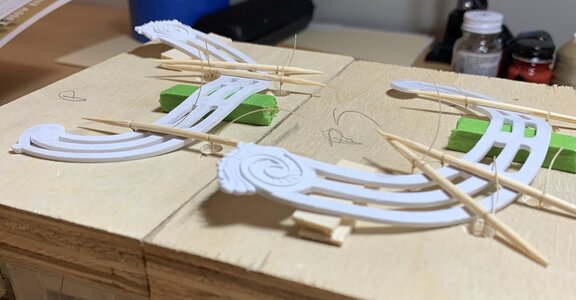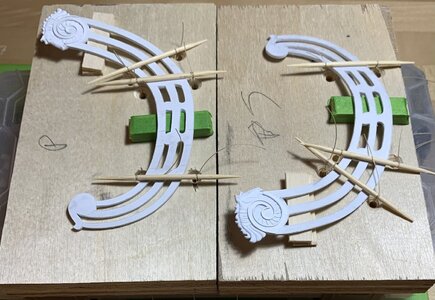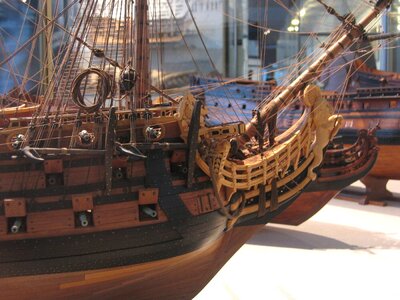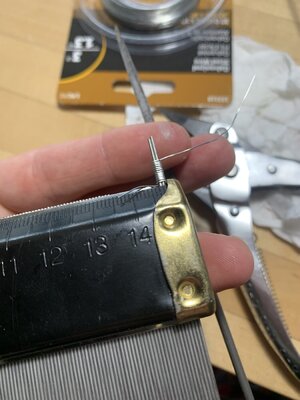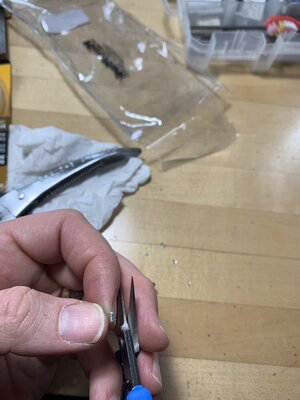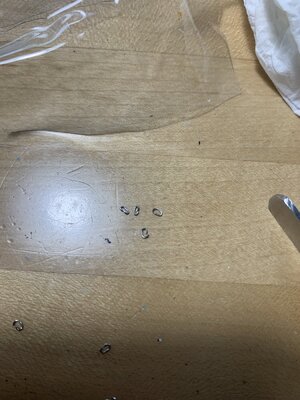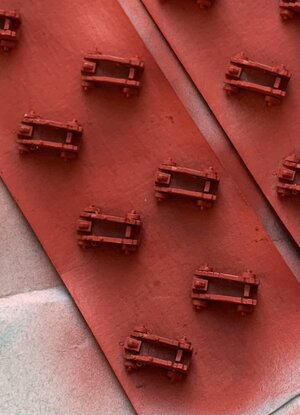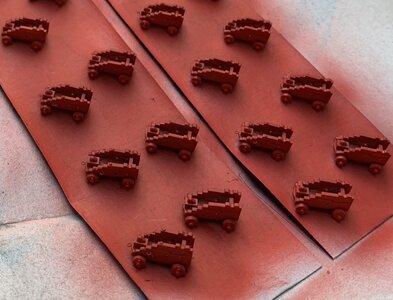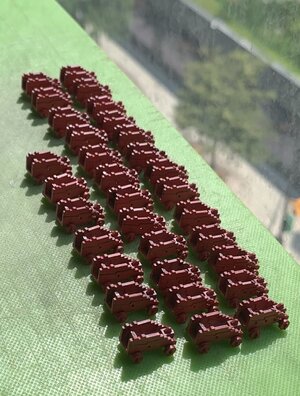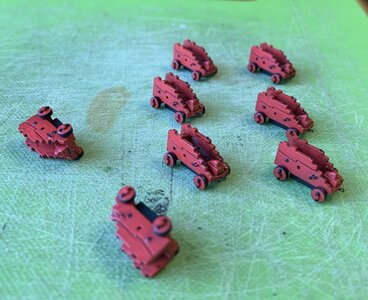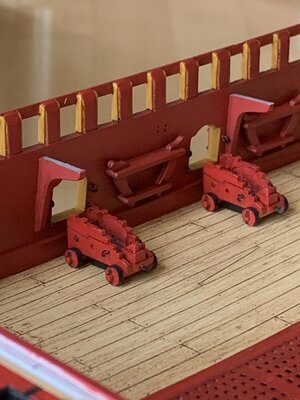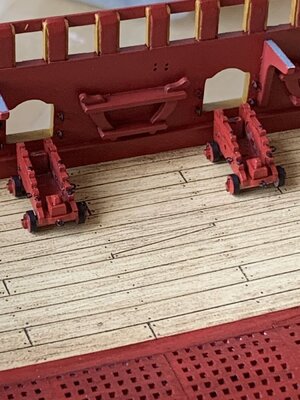In consideration of Thomas’s request, I’ve been photographing the headrails as I carve the horse ornament. The starting place was to carve the fanned relief in the inner scroll:
View attachment 313199
From there, carving the horse is mostly about establishing levels within the carving. Here, I’ve determined that where the mane meets the horse’s back will be the lowest-depth cut of the carving, my baseline:
View attachment 313198
After undercutting the mane a bit, which helps give dimension, later during the modeling of the mane, I decided to proceed from the tail to snout, as this Roman skirt was an easy thing to understand and model:
View attachment 313197
It all proceeds smoothly enough, until the head, which presents some challenges. For the record, I have not done any involved study of horse anatomy. I am merely attempting to hint at the major muscle groups that animate the animal’s jaw and face.
I wanted to experiment with my idea to add the bordering of the headrails. It was easy enough to induce a curl into this square styrene strip (.020) with my finger nail. I anchor the starting point with thin CA, and then I work my way around the scroll, 1/4” by 1/4”, with liquid styrene cement. It turned out about as well as I could have hoped.
View attachment 313196
View attachment 313195
Today, I finished up with the modeling of the head and mane.
View attachment 313194
I still need to add a few applied “buttons” to the two bands that wrap around the horse’s body, but this is a simple thing. It is not an anatomically perfect study, but there is shape and movement that will catch the light and create shadows when painted.
In other news, I have installed the pass-through archways. Because boxwood carvings will sit upon these, I wanted to ensure that they were very securely affixed. After much fitting and strategic scraping of paint, I fit two pins (from a paper clip) into each bracket:
View attachment 313201
View attachment 313202
The plan was to glue these in using CA in the sections where the pins are, and liquid styrene cement in-between and at the foot.
I got the correct rake and alignment for the port side, on the first try. There were, however, a pair of gaps that needed filling for a secure welded bond:
View attachment 313200
I added styrene pads to the foot and below the lower pin and then faired these to fit seamlessly.
With these brackets in place, my conception of the way Berain’s stern relates to these quarter galleries can be clearly understood:
View attachment 313188
View attachment 313189
As a side note: it was really challenging to get the foot of each bracket to align with the pilaster of the gallery bulwark beneath it. The starboard side is acceptable, but the port side (showing the merely acceptable side) came out perfectly:
View attachment 313190
I also wanted the brackets to follow the round-up of the stern, so their in-board surfaces had to be beveled, accordingly:
View attachment 313192
View attachment 313193
View attachment 313191
In natural light, this is a very accurate reflection of my colors. Presently, I continue to do all of the necessary touchups, distress washing (not applied to brackets yet, in these pictures), and blackening of the upper main wales and channels, on the starboard side.
My least favorite aspect of this build is attempting to cut super-clean lines directly onto the model. The plywood base is a tremendous asset for these circumstances, but it is always awkward and difficult. Here, my line began to waver, after I had been at it for a few hours:
View attachment 313187
The back and forth process of revision is on-going. The Heller kit has many flaws, but I do think it is fair to say that they get the aft sheer, pretty close to the mark:
View attachment 313186
More to follow!







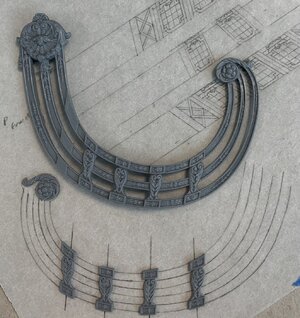
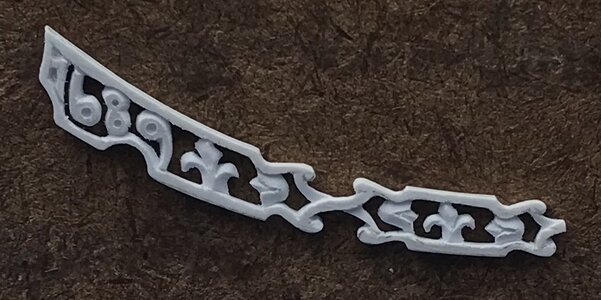
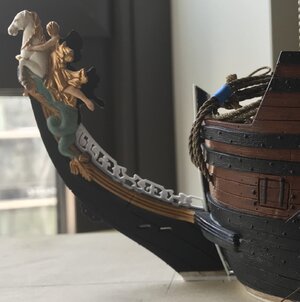

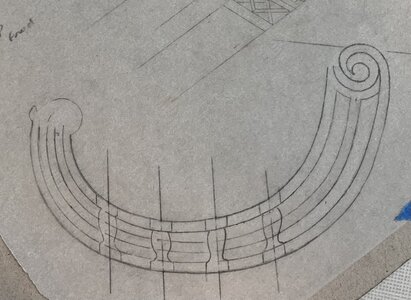
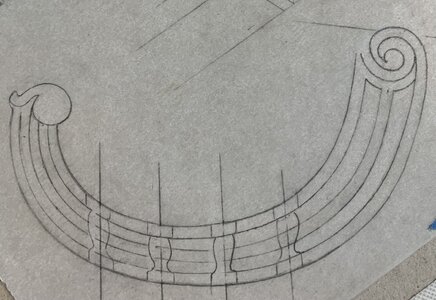
 , now I could start penciling in only the necessary mouldings to help me determine the size of the bellflower garland:
, now I could start penciling in only the necessary mouldings to help me determine the size of the bellflower garland: